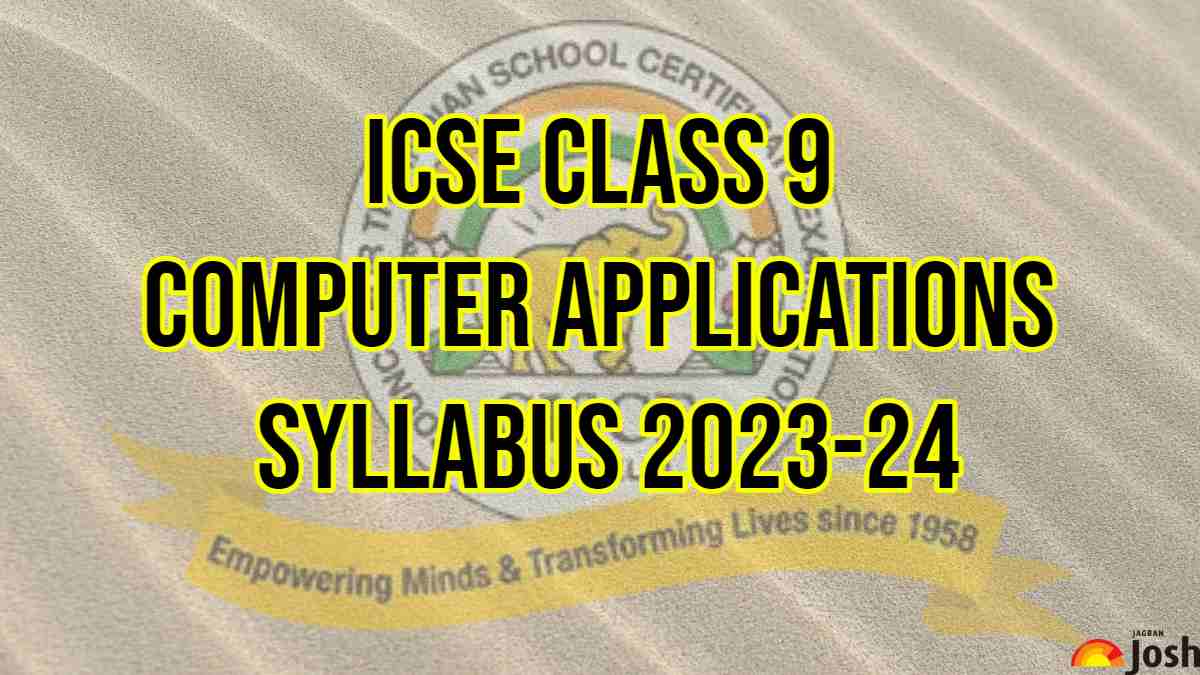Jagran Josh
1. Introduction to Object Oriented Programming concepts
(i) Principles of Object Oriented Programming, (Difference between Procedure Oriented and Object-oriented).
All four principles of Object Oriented Programming should be defined and explained using real-life examples (Data abstraction, Inheritance, Polymorphism, Encapsulation).
(ii) Introduction to JAVA – Types of Java programs – Applets and Applications, Java Compilation process, Java Source code, Byte code, Object code, Java Virtual Machine (JVM), Features of JAVA.
Definition of Java applets and Java applications with examples, steps involved in the compilation process, definitions of source code, byte code, object code, JVM, features of JAVA – Simple, Robust, secured, object-oriented, platform-independent, etc
2. Elementary Concept of Objects and Classes
Modelling entities and their behaviour by objects, a class as a specification for objects and as an object factory, computation as message passing/method calls between objects (many examples should be done to illustrate this). Objects encapsulate state (attributes) and have behaviour (methods). Class as a user-defined data type.
A class may be regarded as a blueprint to create objects. It may be viewed as a factory that produces similar objects. A class may also be considered as a new data type created by the user, that has its own functionality.
3. Values and data types
Character set, ASCII code, Unicode, Escape sequences, Tokens, Constants and Variables, Data types, type conversions.
Escape sequences [\n, \t, \\, \”, \’], Tokens and its types [keywords, identifiers, literals, punctuators, operators], primitive types and non-primitive types with examples, Introduce the primitive types with size in bits and bytes, Implicit type conversion and Explicit type conversion.
4. Operators in Java
Forms of operators, Types of operators, Counters, Accumulators, Hierarchy of operators, ‘new’ operator, dot ( . ) operator.
Forms of operators (Unary, Binary, Ternary), types of operators (Arithmetic, Relational, Logical, Assignment, Increment, Decrement, Short hand operators), Discuss precedence and associativity of operators, prefix and postfix, Creation of dynamic memory by using new operator, invoking members of class using dot operator, Introduce System.out.println() and System.out.print() for simple output.
(Bitwise and shift operators are not included).
5. Input in Java
Initialization, Parameter, introduction to packages, Input streams (Scanner Class), types of errors, types of comments
Initialization – Data before execution, Parameters – at the time of execution, input stream – data entry during execution – using methods of Scanner class [nextShort(), nextInt( ), nextLong( ), nextFloat ( ), nextDouble( ), next( ), nextLine( ), next ( ) .charAt(0) ]
Discuss different types of errors occurring during the execution and compilation of the program (syntax errors, runtime errors and logical errors).Single line comment (//) and multiline comment (/* … */ )
6. Mathematical Library Methods
Introduction to package java.lang [ default ], methods of Math class.
pow(x,y), sqrt(x), cbrt(x), ceil(x), floor(x), round (x), abs(a), max(a, b), min(a,b), random( ).
Java expressions – using all the operators and methods of Math class.
7. Conditional constructs in Java
Application of if, if else, if else if ladder, switch-case, default, break.
if, if else, if else if, Nested if, switch case, break statement, fall through condition in switch case, Menu driven programs, System.exit(0) – to terminate the program.
8. Iterative constructs in Java
Definition, Types of looping statements, entry controlled loops [ for, while], exit controlled loop [do while] , variations in looping statements, and Jump statements.
Syntax of entry and exit controlled loops, break and continue, Simple programs illustrating all three loops, interconversion from for – while – do while, finite and infinite, delay, multiple counter variables (initializations and updations). Demonstrate break and continue statements with the help of loops. Loops are fundamental to computation and their need should be shown by examples.
9. Nested for loops
Introduce nested loops through some simple examples. Demonstrate break and continue statements with the help of nested loops.
Programs based on nested loops [ rectangular, triangular [right angled triangle only] patterns], series involving single variable. (Nested while and nested do while are not included.)
10. Computing and Ethics
Ethical Issues in Computing.
Intellectual property rights; protection of individual’s right to privacy; data protection on the internet; protection against Spam; software piracy, cybercrime, hacking, protection against malicious intent and malicious code. The stress should be on good etiquette and ethical practices.
#ICSE #Class #Computer #Applications #Syllabus #Download #Syllabus #PDF
